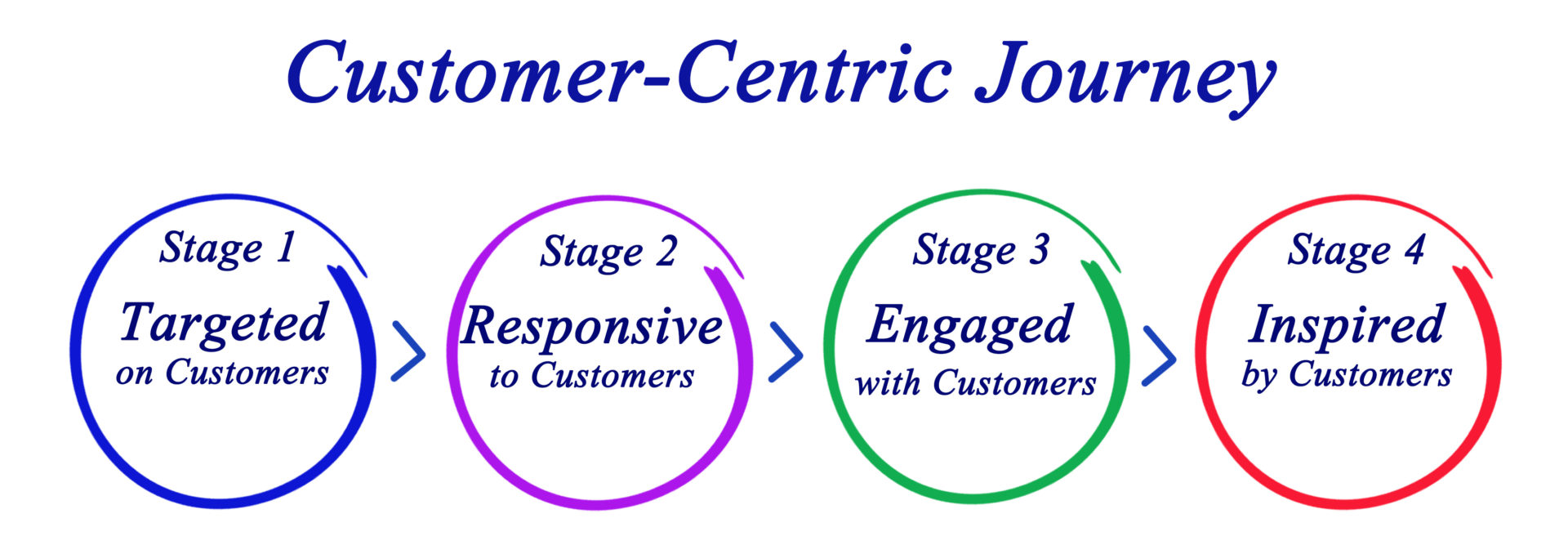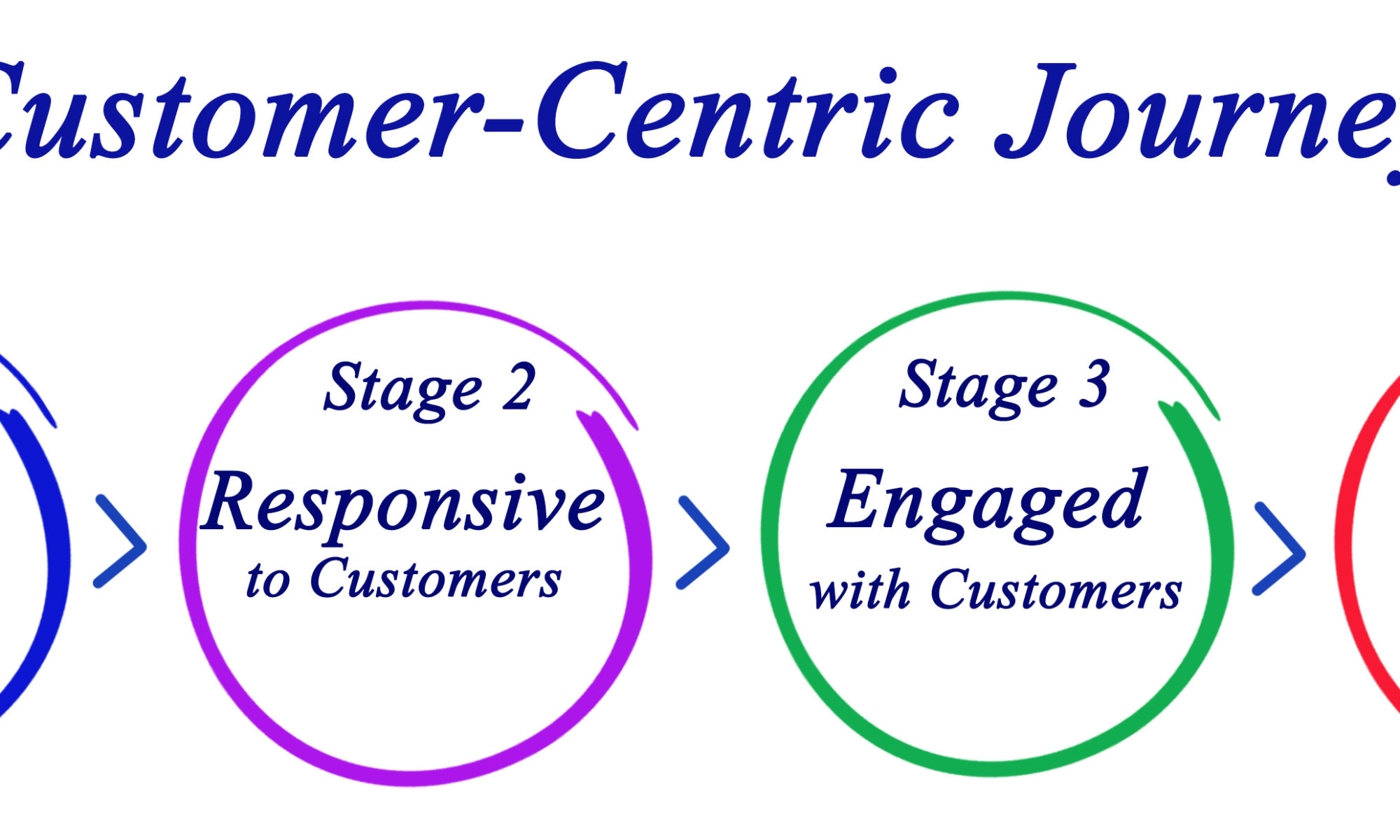The customer culture in its implementation must put the customer at the center of all functional processes.
Starting with the customer is therefore a real cultural revolution and a questioning of the organization in its decision-making intelligence.
Customer culture starts with the customer
This means the outright abandonment of the process of sequencing the tasks associated with the company’s production system.
The company’s processes meet the expectations of the customer throughout his journey. The company is inspired by customers to evolve as shown in the diagram below.

Facebook, in its decision to switch all of its employees to telework, its objective is to immerse themselves completely in the world of its users: alone in front of their screen. The company integrates customer culture into its DNA. The internal journey becomes identical to the external customer journey.
Successful customer culture: validating the customer / user journey
In the article Digital tools for effective strategic management, we underline the importance of starting with the customer journey within the company to identify the strengths of the company in its customer relationship.
The customer experience is often limited to isolated initiatives, mainly pure marketing actions. The lack of coordination with the strategic vision of the company and its value chain is counterproductive.
This adds a communication process parallel to existing ones, without questioning internal silos, nor focusing on the company’s strategic vision or the product value generated.
Even more, companies often see new technologies as levers for the development of a successful customer experience, when the latter can in reality only be a support for a more global strategy.
The goal of customer culture is to ensure that all the actual or potential stages through which a customer (or a user) passes throughout their relationship with an organization or a brand are easy to use and respond to the client’s problem. It is in this sense that customer culture creates values.
The Customer Journey and customer culture
The customer journey is the tool used to formalize the response to customer needs throughout the value chain. It has even become the new weapon of strategic management in its variation of web-marketing.
It takes the form of a typical journey that begins with the customer’s formalization of a need and then continues with a passage to action (information search, access to an online service, purchase, etc.). It may also include subsequent steps (use / reuse of the service, request for support, search for advice, additional purchase, etc.) and take place in a physical location and / or through digital channels.
The link between the customer journey and the customer culture only makes sense if all the dysfunctions identified during the journey are resolved, thus making his experience with the brand as fluid as possible.
Customer culture establishes a personal link with its target
To reduce the points of friction, the company will define and segment its targets in order to personalize the link with its customer.
The relevance of a customer journey will therefore be based on the prior identification of targets and associated profiles. Each profile will correspond to a specific customer / user journey grouping together a series of key moments (“Customer journey”).
Strategic management will therefore also have to, within the framework of the establishment of a customer culture, define how far it is ready to go in the name of the “DATA queen”, the basis of the company’s e-reputation. .
Is the objective to meet each need / aspiration expressed in this journey by the customer or to launch a race for the stars?
Race for the stars or customer culture!
The “race for the stars” is the rating given by customers / users on social networks.
The example Airbnb
Airbnb engages owners in a race for the stars to be the best host and thus have more bookings.
Originally, the idea of the platform was to occasionally make a room in one’s home available, to welcome visitors and make ends meet. Today it has become a real alternative to the hotel.
A simple 4 rating from a passing visitor lowers your rating and, if it is repeated, prevents you from being a great host.
The Airbnb platform transforms the user experience initially imagined as “access to a room, everywhere”, to a slow-tourism experience, into “live my life”.
The host gradually transforms his simple welcome in his house into a real customer experience. Will the host decide to bow to the reign of data or will he keep the simple side of his welcome, reserving the use of his house to himself and not to his passing customer.
The host will therefore have to decide on the customer culture he will put in place to welcome his visitors, at the risk of not being suitable for everyone, of being poorly rated on the platform. It is up to him to define his target, so that the experience side is maintained to the detriment sometimes of the race for the stars.
Another example of the race for the stars, Uber
At Uber, customer satisfaction transforms the offer into a 5-star race with a driver who asks you: “Put me 5, otherwise I would not have enough races offered by the platform …” The customer can be confused : “I would put 1 because he smokes in his car and puts the radio on full blast, but the poor man will be frowned upon by Uber, and will no longer receive a race”. What a dilemma imposed on the customer!
Customer culture or technology race
Even more, companies often see new technologies as levers for the development of a successful customer experience, when they can in reality only be a support for strategic management.
A real imbalance has emerged in the forces present in this race for the ideal customer experience, with “digital-native” companies on the one hand, and so-called traditional economy companies on the other. Digital natives create value from the customer experience. Traditional businesses create value from the quality produced.
Traditional companies wishing to evolve towards a value produced by the customer experience must therefore revisit their model. To do this, they will review their process as part of the route taken by the customer to contact the company. It is a complete revolution in the vision of the strategic management of the company which underlies the organization of work in the review of all of its production processes. This approach becomes a new weapon of web-marketing and underpins the managerial functioning of what will become a digital factory.
Agile values and UX experience
Agile values promote direct interactions with customers, without intermediaries.
As part of a customer centric approach, or the deployment of an adaptive customer culture, it will therefore be necessary to simplify the organization or build an organic system of autonomous operational units.
The most common drifts are the deployment of Product Owners who are an interface between IT and business lines, with no direct link either with the needs of external customers or with internal needs. The product owner has become a digital profession!
Start with the customer: a real internal revolution
Starting with the customer is a real internal revolution because it requires a review of all information systems (IS), in order to position customer information before production information.
Thus the delay times will no longer be those associated with production delays but with the customer’s waiting time. A late delivery without customer impact has no consequences.
The criteria used to start with the customer:
1 – Criteria that can be fully mastered by the company:
Expectations : does the company meet your expectations?
Resolution : Did the company easily solve your problem?
Customization: does the company meet your specific needs?
Time and Efforts : is it easy for the customer to be in contact with the brand?
Through these 4 criteria, the company will operate a modification of its corporate culture to integrate the customer. We will thus speak of customer culture.
2 – Criteria related to the brand’s e-reputation
Intégrity : does the customer trust the brand?
Empathy: does the company empathize with the customer?
Who are the players in my e-reputation?
- My clients
- My collaborators
- The influencers
- My competitors
- My publications
These different components go into the referencing of my site, in its position in the search engines, in the online comparative analyzes, in my local referencing. A bad e-reputation therefore influences my turnover in the long term, since the number of visitors to my portal site is dependent on my referencing.
By interacting and generating common experiences with my clients, I will promote content sharing and thus contribute to my digital visibility. The publications of my company, crossed with those of my clients and then with my employees will boost my digital presence and build my e-reputation.
Discover a marketing definition of client-centric on the Marketing Definitions site.
Author: Dominique popiolek-Ollé, Transmutation leader, Agile Executive Coach, Founder of In Imago, management consulting and disruptive transformation.

